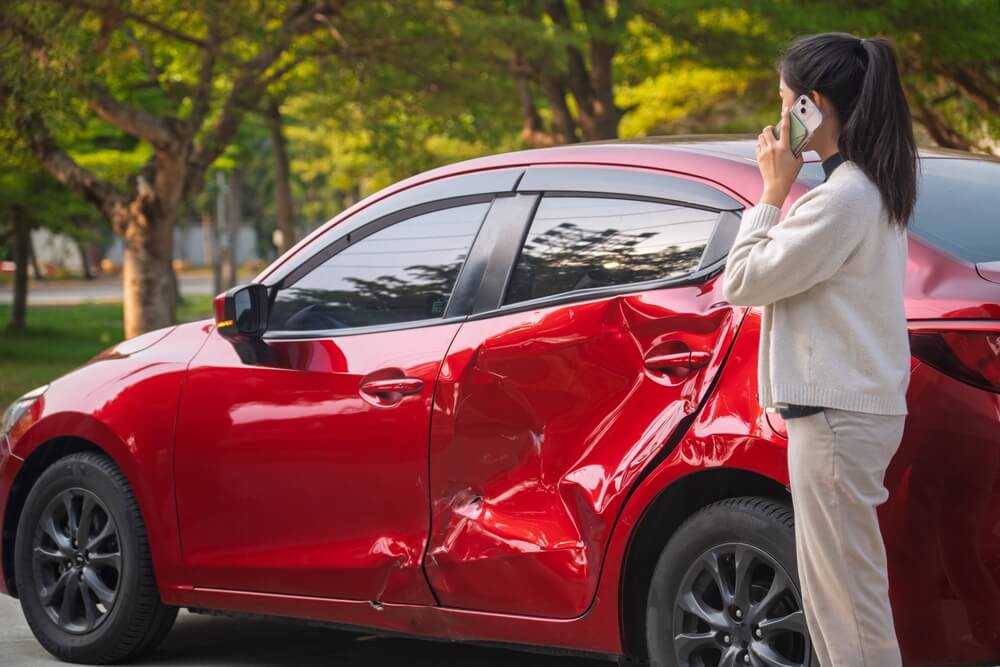
If you are not redirected within 30 seconds, please click here to continue.
Samedi: 10h – 16h HAE

If you are not redirected within 30 seconds, please click here to continue.
If you are not redirected within 30 seconds, please click here to continue.
Table of Contents
This article has been updated from a previous version.
High car insurance premiums can feel like a frustrating burden, but don’t let that get you down. Instead, get curious.
The more you understand about how car insurance works and the discounts you may be eligible for, the more you will likely be able to reduce your premium.
Here are 15 ways that may help you get a lower car insurance rate:
1. Insure multiple cars on one policy
Most car insurance companies offer a multi-vehicle discount to customers who insure more than one car on the same policy. That discount can bring you savings typically in the range of 8% to 25%.
2. Bundle your auto and home insurance policies
Combining your car and home insurance can save you up to 25%. If you don’t own a home, you can still bundle with renters or motorcycle insurance.
3. Change your tires seasonally
Winter tires are a great way to tackle the winter season safely, and in Ontario, having them will get you a discount, usually up to 5%.
The Ontario winter tire auto insurance discount has been in place since 2016, and all insurers in the province must offer it to drivers who change their tires seasonally. Many insurers in other provinces, like Alberta, also offer a winter tire discount.
4. Ask about discounts
There are oodles of auto insurance discounts that can help you save on your auto insurance. Ask your insurer for their list because you never know which details about your life could save you money.
Have a smarty pants in the family? There's the Good Student Discount that may be available. Is your child away at college or university? If they only drive the car when visiting their home, some insurers offer a Student-Away-at-School discount.
Have you recently signed up for a roadside assistance program? There's often a discount for that too.
Read more: What discounts can lower your auto insurance premium?
5. Increase your deductibles
In a nutshell, the higher your deductibles, the lower your insurance premium. Insurance was really meant to cover damages you could never afford yourself. If you switch your deductibles from $500 to $1,000, you'll likely save between 5% and 10%.
Make sure you can afford it though, because in the event you must file a claim, the deductible is the portion you have to pay upfront before your insurance is activated.
6. Drop comprehensive and collision coverage on older vehicles
It may be time to rethink your collision and comprehensive coverages if your car is 10 years old or older. That said, it's not always a clear-cut decision. You need to weigh the cost of the coverage with the value of your car and your chosen deductibles.
For example, if you have an old car that's worth $1,000 and your deductible is $1,000, that coverage is not going to be worth a hoot.
7. Pay your premium annually instead of in monthly installments
Paying your car insurance premium once a year instead of monthly can save you some cash since many insurers offer discounts for full payments. Monthly payments usually come with extra administrative fees, which add up.
While savings can vary, you can typically expect to save about 7% on your premium when you pay annually. Just keep in mind that the exact percentage can change depending on your insurer and specific policy.
Read next: Should you pay your insurance premium annually or monthly?
8. Drive defensively
Your driving record is one of the most influential factors in determining your insurance rate. Being a cautious and courteous driver and driving the posted speed limit will help you keep that record spotless. Tickets affect your insurance rate for up to three years and accidents stay on your record for at least six years.
Also, many people fidget with a mobile device when they’re behind the wheel. Don’t. You can be charged with distracted driving if a police officer notices a mobile device in your hand even when you’re at a stoplight.
A driving record that’s rife with traffic convictions will make it exceedingly tough to get a cheap auto insurance rate.
9. Enroll in a usage-based insurance program
A usage-based insurance (UBI) program can save you 5% to 10% just for signing up, with additional savings of up to 25% annually for good drivers.
UBI programs involve downloading and using a mobile app or attaching a device to your vehicle to monitor how, when, and how far you drive. It tracks things like how fast you accelerate and brake, the time of day you're on the road, trip duration, and speed. UBI programs can help lower your rate.
Read more: How much can good drivers save with usage-based auto insurance?
10. Drive a "low-risk" car
Insurance rates for cars are based on the claims history for that vehicle as well as how costly the vehicle is to repair if it’s damaged in an accident. Also, the more likely a car is to be stolen, the more you'll pay to insure it.
The chance of a car getting stolen significantly affects insurance premiums because insurers factor in the theft risk when determining rates. If a car model is often targeted by thieves, insurance companies expect more claims and higher costs, which means higher premiums for that vehicle.
Related: Thinking of upgrading to a 2024 Dodge Ram? Prepare to pay 408% more for comprehensive insurance
11. Limit your commute to work
The more you drive, the greater the chance of getting in an accident. Insurance rates are higher for people who commute to work. If you cannot work from home, try taking the bus or carpooling with others if possible.
If you can do so safely, it will help you save money on parking, gas, and it may lower your insurance premium too. Be sure to notify your broker or insurer if you are driving less or not at all to make savings.
12. Just starting out as a driver? Enrol in a driver's training course
If you're a new driver and you've finished an approved driving course in the last three years, many insurance companies will give you a discount.
How much you save usually depends on the insurance company and program, but it's typically between 10% and 20%.
13. Review your policy regularly
Life changes like marriage, crossing the age of 60, moving, or adding teen drivers can affect your rate. Regularly compare your rates to make sure you're getting the best deal.
Car insurance rates often change, and the company that provided you the best rate five years ago, two years ago, or even last year may no longer offer you the best deal today.
14. Have an anti-theft device installed in your car
Some insurance companies recognize your car is less likely to be stolen if you have an anti-theft device installed in it. Newer vehicles are typically equipped with anti-theft protection, as well as many driver-assist technologies.
Many insurers provide discounts if you’re driving a vehicle that has these technologies.
15. Compare car insurance rates
Car insurance coverage may be standard throughout your province, but insurance premiums are another story. Coverage from one company to the next can vary by hundreds, if not thousands of dollars a year.
The only way to make sure you are getting the best price for your policy is to compare quotes whether your auto policy is up for renewal or not.
By being proactive and informed, you can find plenty of ways to save on your premiums. Whether it's bundling policies, checking out discounts, or trying usage-based programs, these strategies help you make smarter choices when it comes to insurance.
Don't waste time calling around for auto insurance
Use RATESDOTCA to shop around, and compare multiple quotes at the same time.
Get money-saving tips in your inbox.
Stay on top of personal finance tips from our money experts!










